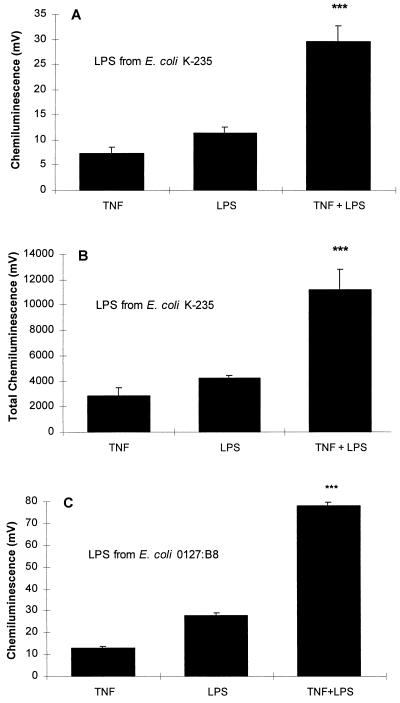FIG. 1.
(A) Effect of TNF on the LPS-induced neutrophil CL response. Neutrophils (106) were preincubated with 20 U of TNF for 20 min and then challenged with 100-ng/ml LPS (E. coli K-235), and CL was measured over 50 min of incubation. The values shown are the peak initial rate of CL and represent the means ± the standard error of the mean of eight experiments, each conducted in duplicate with neutrophils from eight different donors. The basal CL of 6.1 mV was deducted from each of the experimental values. Neutrophils treated with TNF and LPS showed a significantly increased response compared to responses induced by either of the agents alone (∗∗∗, P < 0.001 for TNF versus TNF plus LPS and LPS versus TNF plus LPS; P < 0.015 for the sum of values for the individual TNF and LPS treatments versus cotreatment with TNF plus LPS, [analysis of variance]). (B) Data expressed as a function of the total accumulated CL generated over the incubation period. The baseline value of 2528 mV was subtracted from each column. (∗∗∗, P < 0.001 for TNF versus TNF plus LPS and LPS versus TNF plus LPS; P < 0.015 for the sum of values for the individual TNF and LPS treatments versus cotreatment with TNF plus LPS [analysis of variance]). (C) Effect of LPS (E. coli 0127:B8) under the same conditions as in A. The basal CL of 13.3 mV was deducted from each of the experimental values. The increased response to stimulation with both TNF and LPS was highly significant (∗∗∗, P < 0.001 [analysis of variance]).

